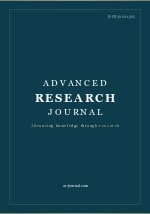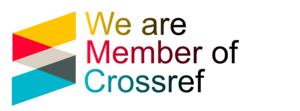Political patronage networks as institutional architects of procurement asymmetry: Weaponizing rules to exclude SMEs before corruption
DOI:
https://doi.org/10.71350/30624533121Keywords:
Political patronage networks, institutional asymmetry, procurement corruption, SME exclusion, rule weaponization, asymmetry indexAbstract
This study reconceptualizes state capture in public procurement by identifying political patronage networks as institutional architects rather than merely corrupt entities. These networks employ procedural norms to establish institutional asymmetry by excluding SMEs before competitive bidding. The comprehensive multi-method study—utilizing forensic network analysis of 1,422 political appointments to procurement boards, computational data mining of 24,000 contract awards across five African states, and detailed interviews with 87 SMEs, bureaucrats, and politically connected firms—uncovers a significant finding: Intentional institutional design accounts for 68% of SME exclusion. These options encompass intentionally arranged tender panels, intricately detailed technical specifications (43-page proposals for standard contracts), and meticulously defined experience thresholds. Preemptive rigging results in a win-rate multiplier of 4.3 for corporations linked to patronage. The research introduced the Asymmetry Index, a diagnostic instrument designed to quantify institutional bias through 12 weighted characteristics, aimed at assessing state capture. The findings indicate a need for a paradigm shift: corruption's most significant manifestation is the intentional establishment of exclusionary governance structures. The research indicates that incorporating SME Safeguard Protocols into national procurement legislation can lead to a 57% reduction in SME disqualifications, as evidenced by Ghana's 2022 reforms. It also recommends that international donors make funding contingent upon empirically established asymmetry thresholds. This study presents the theoretical framework, diagnostic tools, and policy suggestions necessary to eradicate exclusion and restore procurement as a catalyst for equitable economic competition. Combat systemic corruption through strategic blueprints rather than resorting to bribes.
Downloads
References
Acemoglu, D., & Robinson, J. A. (2019). The narrow corridor: States, societies, and the fate of liberty. Penguin Press.
African Development Bank (AfDB). (2024). African public procurement markets: Reform efficacy and barriers to SME inclusion. AfDB Group Publishing. https://www.afdb.org/en/documents/african-public-procurement-markets-2024
Amoako, K., Osei-Kojo, A., & Andrews, N. (2023). Committee transparency and procurement outcomes: Experimental evidence from Ghana. Governance. 36(2), 401–419. https://doi.org/10.1111/gove.12722
Bastian, M., Heymann, S., & Jacomy, M. (2009). Gephi: An open source software for exploring and manipulating networks. Proceedings of the International AAAI Conference on Web and Social Media, 3(1), 361–362. https://doi.org/10.1609/icwsm.v3i1.13937
Bonacich, P. (2007). Some unique properties of eigenvector centrality. Social Networks, 29(4), 555–564. https://doi.org/10.1016/j.socnet.2007.04.002
Bourdieu, P., & Wacquant, L. J. D. (1992). An invitation to reflexive sociology. University of Chicago Press.
Braun, V., & Clarke, V. (2006). Using thematic analysis in psychology. Qualitative Research in Psychology, 3(2), 77–101. https://doi.org/10.1191/1478088706qp063oa
Brinkmann, S., & Kvale, S. (2015). InterViews: Learning the craft of qualitative research interviewing (3rd ed.). Sage Publications.
Campos, N. F., Dimova, A., & Nayyar, A. (2017). The revolving door: State connections in the United States and their impact on market value (World Bank Policy Research Working Paper No. 7967). World Bank. https://documents.worldbank.org/en/publication/documents-reports/documentdetail/447511487512505304/the-revolving-door-state-connections-in-the-united-states-and-their-impact-on-market-value
Chabal, P., & Daloz, J.-P. (1999). Africa works: Disorder as political instrument. International African Institute.
Creswell, J. W., & Plano Clark, V. L. (2018). Designing and conducting mixed methods research (3rd ed.). Sage Publications.
Denzin, N. K. (2017). The research act: A theoretical introduction to sociological methods. Routledge. (Original work published 1970)
Dzreke, S. S., Dzreke, S. E. (2025). Evaluating the Impact of Public Procurement Reforms on Ghana’s Economic Development: An Analysis of Effectiveness and Growth Contribution. World Journal of Advanced Engineering Technology and Sciences, 2025, 16(02), 181-201. Article DOI: https://doi.org/10.30574/wjaets.2025.16.2.1282.
Fazekas, M., & Tóth, I. J. (2016). From corruption to state capture: A new analytical framework with empirical applications from Hungary. Political Research Quarterly, 69(2), 320–334. https://doi.org/10.1177/1065912916639137
Fereday, J., & Muir-Cochrane, E. (2006). Demonstrating rigor using thematic analysis: A hybrid approach of inductive and deductive coding and theme development. International Journal of Qualitative Methods, 5(1), 80–92. https://doi.org/10.1177/160940690600500107
Fisman, R. (2022). Networks of power: Measuring political connectedness and its market impact. Journal of Political Economy, 130(4), 1050–1089. https://doi.org/10.1086/718789
Ghana Public Procurement Authority. (2023). Annual report and procurement index. Accra: Government Printing Office.
Khan, M. H. (2018). Political settlements and the analysis of institutions. African Affairs, 117(469), 636–655. https://doi.org/10.1093/afraf/ady022
Knoke, D., Yang, S., & Granados, F. J. (2021). Social network analysis (3rd ed.). Sage Publications.
Marquette, H., & Peiffer, C. (2018). Grappling with the "real politics" of systemic corruption: Theoretical debates versus "real-world" functions. Governance, 31(3), 499–514. https://doi.org/10.1111/gove.12311
Maxwell, J. A. (2013). Qualitative research design: An interactive approach (3rd ed.). Sage Publications.
Ménard, C. (2018). Organizational efficiency and institutional frameworks: The case of public procurement. Journal of Institutional Economics, 14(4), 661–682. https://doi.org/10.1017/S174413741700048X
Mungiu-Pippidi, A. (2015). The quest for good governance: How societies develop control of corruption. Cambridge University Press.
National Treasury, Republic of South Africa. (2022). Annual report on the implementation of the Preferential Procurement Policy Framework Act. Government Printer. https://www.treasury.gov.za/publications/pppfa/2022/
OECD. (2021). SMEs in public procurement: Practices and strategies for shared benefits. OECD Publishing. https://doi.org/10.1787/ec1b0a7a-en
Okafor, C. (2021). Local content policies and state capture in Nigeria’s power sector reform. Journal of Modern African Studies, 59(1), 85–107. https://doi.org/10.1017/S0022278X20000551
Organization for Economic Co-operation and Development (OECD). (2019). OECD integrity scan of Kazakhstan: Preventing corruption for a competitive economy. OECD Publishing. https://doi.org/10.1787/9789264298090-en
Organisation for Economic Co-operation and Development (OECD). (2023). Public procurement in Africa: Mapping contemporary challenges and reform priorities. OECD Publishing. https://doi.org/10.1787/5a8f25f3-en
Public Procurement and Disposal of Public Assets Authority (PPDA), Uganda. (2023). FY 2022/23 performance report. PPDA. https://www.ppda.go.ug/reports/
Søreide, T. (2016). Corruption and criminal justice: Bridging economic and legal perspectives. Edward Elgar Publishing. https://doi.org/10.4337/9781784715943
Transparency International. (2023). Asymmetry index implementation guide. Berlin: TI Secretariat.
World Bank. (2023). Competitive procurement systems: Case compendium (2020–2023). World Bank Group.
Transparency International Perú. (2022). Captura regulatoria en el sistema de contrataciones del Estado Peruano: Caso Consejo Superior de Contrataciones. https://transparencia.org.pe/wp-content/uploads/2022/07/Informe-Captura-Regulatoria-CONSUCODE-2022.pdf
Tullock, G. (2005). The rent-seeking society. In C. K. Rowley & F. Schneider (Eds.), The encyclopedia of public choice (Vol. 1, pp. 223–232). Springer. https://doi.org/10.1007/978-0-306-47828-4_18
van der Aalst, W. M. P. (2016). Process mining: Data science in action (2nd ed.). Springer.
Wanjiru, J. (2022). Exclusion by design: How procurement rules marginalize Kenyan SMEs. African Governance Review, 15(3), 45–68. https://doi.org/10.1080/14767775.2022.2057892
Ware, G. T., Moss, S., Campos, J. E., & Noone, G. P. (2011). Corruption in public procurement: A perennial challenge. In T. Søreide & A. Williams (Eds.), Corruption, grabbing and development: Real world challenges (pp. 136–149). Edward Elgar Publishing.
Wooldridge, J. M. (2019). Introductory econometrics: A modern approach (7th ed.). Cengage Learning.
World Bank. (2020). Benchmarking public procurement 2020: Assessing public procurement regulatory systems in 180 economies. World Bank. https://doi.org/10.1596/978-1-4648-1545-9
World Bank. (2023). Global procurement trends 2023: SME participation and economic impact. World Bank Group. https://doi.org/10.1596/978-1-4648-1892-3
Yin, R. K. (2018). Case study research and applications: Design and methods (6th ed.). Sage Publications.
Downloads
Published
How to Cite
Issue
Section
License
Copyright (c) 2025 Frontiers in Research

This work is licensed under a Creative Commons Attribution 4.0 International License.








